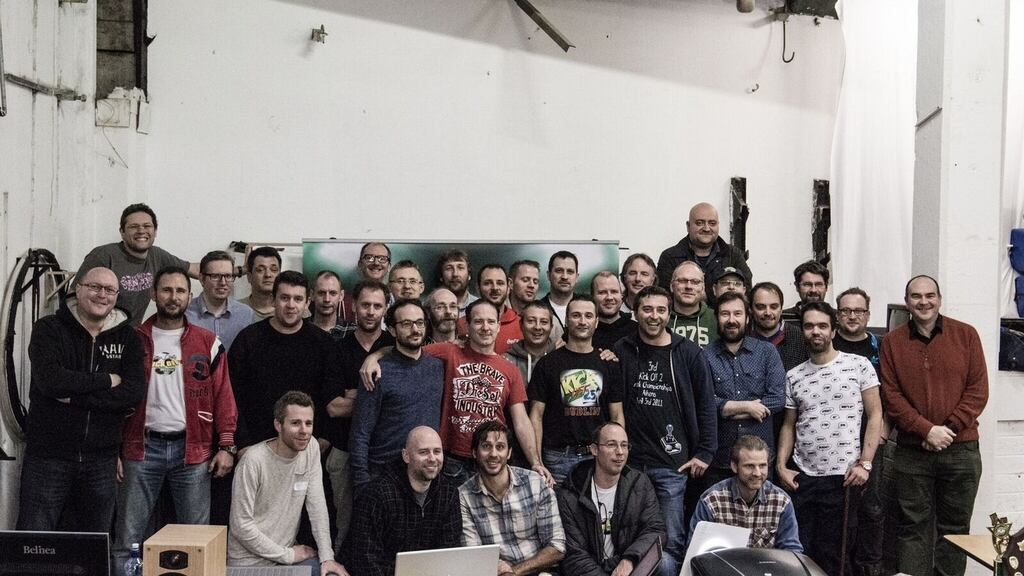In 1990, Kick Off 2 was released for the Commodore Amiga. Decades later, international tournaments of the game are still happening, with the Kick Off 2 World Cup taking place in Dublin last month. Some 38 players from 11 countries took part in the event, which was also attended by its developer, Dino Dinis. He's working on a new version of the game with Sony's support.
"One of the reasons that we still go back in time to play this is that you can do so much with just one fire button, unlike modern games, which need six or seven different buttons," says Pedro Quaresma, one of the World Cup's organisers.
“You can lob the ball, or kick and pass, with just one button. It just requires a bit of skill. So we consider it to be the best football game that was ever made for a computer. Fifteen years ago we decided to organise a world cup, so here we are!”
Kick Off 2 looks very much like a game from 1990, but the game-play has aged beautifully. Unlike in modern football games, players don't automatically dribble; you have to manipulate them around the ball. It's tricky, but fair and intuitive. And it's very fast-paced.
“My vision was to make a game that was fun to pick up but had such depth that no matter how much you play it, you’d never get to the bottom of it,” says Dinis.
“That’s the case with many worthwhile things. When you’re playing an instrument, or playing a sport, you’re learning your entire life. The learning part never ends and that’s what I wanted to go to. I say I only partly succeeded: it could’ve been easier in the beginning because the game is hard.
"But then, after agonising over that, I saw people try it for the first time a few weeks ago at a tournament in Poland. The score was zero-zero, I thought, What am I going to do if nobody scores?'
Rewarding
“Eventually someone did and they said afterwards, ‘I’m always going to remember that goal.’ If you make something difficult, it’s much more rewarding when you succeed. The [games] industry has forgotten this.” Dinis, who also lectures in game design, thinks the industry lost perspective for a while but is getting back on track with the rise of indie games and the return of auteur developers.
“Things have changed [in recent years],” he says. “Now people are getting exposed to more indie games. They’re finding themselves getting hooked on games that don’t have ridiculously impressive graphics. This is due to the re-emergence of indie, which came about because it’s possible for anyone to make the games, and also to get those games into the hands of an audience.
“Those two things were taken away, but they’re back with Unity [a game development engine], which democratised technology. And then the App Store made it possible to get games into the hands of people.
The combination of being able to easily create and distribute games is a "great motivator", he says, and provided the opportunity for people to "start seeing what's missing in bigger games. Then after that and the success of Minecraft, the industry started embracing indie developers.
He singles out Journey as a recent indie game he liked. "[It] is a beautiful game. It's not the kind of game that's traditional, arcade-inspired. It works as a piece of art. Sony helped make that happen too."
Smaller games of note include Ori and the Blind Forest, Elite Dangerous, and Prison Architect. "We're getting back to the golden era, where there are all kinds of weird games based on things you wouldn't have thought of. Remember Paperboy? We haven't seen much of that in the past 20 years, but it's coming back."
It’s common in culture for the work to take on a life beyond the artist: Books, films and plays routinely outlive their creators, but games can take on a life of their own too, evolving as fans continue to play them for decades.
Seed
“I’ve planted a seed 25 years ago,” Dinis says, “and now I can look at what’s grown from the seed I planted. It’s astonishing. It’s almost like it’s a baby that grew up, and as it did so, it developed all this character, demonstrated by how people play the game . . . They have mastered it to such a degree that it’s become more than I thought it could be. That’s the biggest thing I take from this. I can use [tournaments] as inspiration for development of the new game. Everything that’s happening here will find its way into
Kick Off Revival
.”











